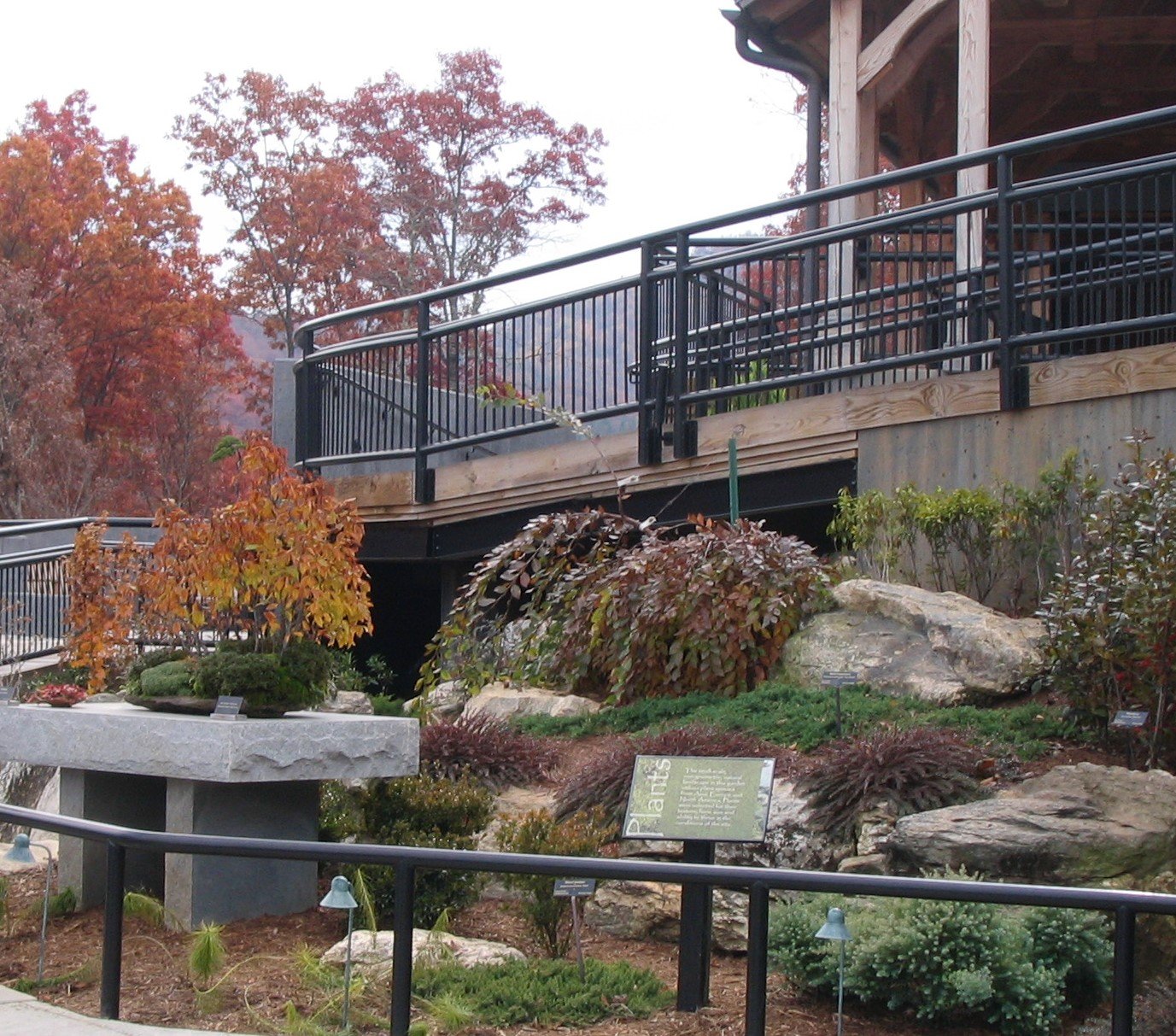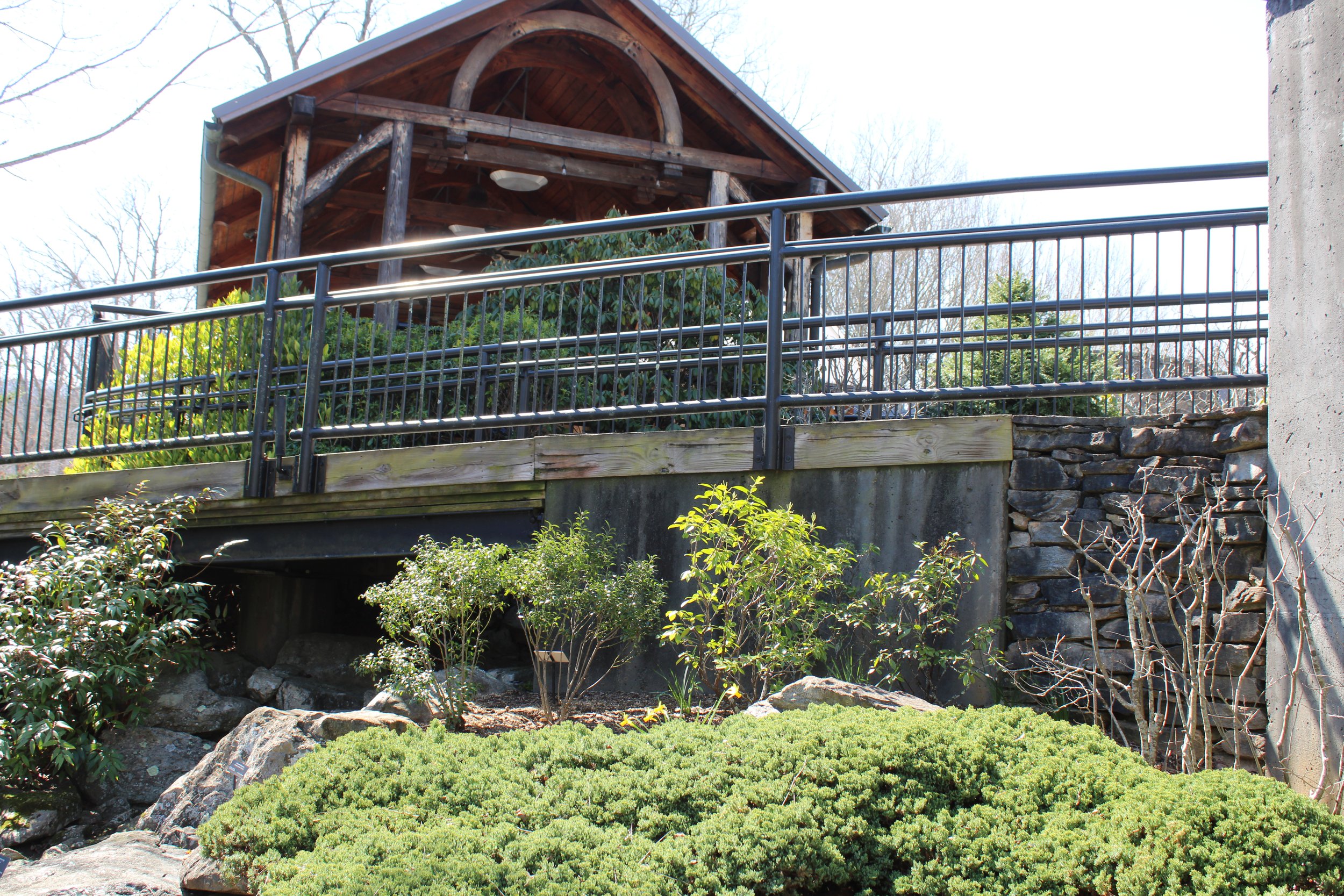Life and Death - Part 1, In the Garden
Gardens, at least the good ones, are full of life. The Arboretum's Bonsai Exhibition Garden is an excellent garden, and as such it teems with life. We manage it to be that way. No matter the season, a visit to the bonsai garden will involve encounters with other forms of life, and often not just plants. Even in the heart of winter you might come across birds or squirrels, or perhaps the occasional rabbit. As spring develops, warming first the air and then the earth, more birds and mammals of greater variety appear, joined by reptiles, amphibians and, of course, innumerable bugs and insects. Simultaneously, herbaceous plants and fungi burst forth from the ground while leaves and flowers emerge from buds on woody plants. There is a vibrantly abundant pulse of being all through the growing season, so much so that a visit to the bonsai garden at that time can feel like taking a dive into the river of life.
Gardens are beautiful because there is beauty in life. There is more involved than that, though. It is the inescapable fact of existence as we know it, that where there is life there must inevitably be death. Life feeds on death, on all levels from the microscopic to the largest manifestations of creative energy. This reciprocal relationship between life and death is the primary arrangement in all animate business on earth, the central mechanism of the natural order that has so long kept entropy at bay. This dynamic contains within it all things — the positive and the negative, the alpha and the omega, the yin and the yang.
Death came this year to a tree in the bonsai garden landscape. This has happened before and must be taken in stride as an unfortunate albeit completely natural event. Still, this was a prominent specimen tree, one that had been in the landscape since the garden was created in 2005. This tree started small and unremarkable, grew in place being carefully guided and shaped, maturing into a tree of presence and personality. For those familiar with the bonsai garden, the tree in question was the weeping winged elm (Ulmus alata 'Lace Parasol'), growing in the upper middle section of the garden. It was an uncommon cultivar of a species native to North Carolina. In fact, it was a North Carolina nurseryman who discovered the original specimen growing in the woods near where he lived, then collected and transplanted the unusual find to his home landscape. That tree eventually went to the JC Raulston Arboretum in Raleigh before being propagated and introduced to the nursery trade under the name "Lace Parasol." The specimen planted in the bonsai garden was given to The North Carolina Arboretum by the JC Raulston Arboretum. That donation occurred while the bonsai garden was being built, and the elm was subsequently slotted into the garden's landscape in place of a weeping Japanese maple that was called for in the original landscape design.
2005 - The Lace Parasol weeping winged elm as it looked when first planted in the bonsai garden (it’s the small green mound between the rocks near the center of the image).
2007 - The weeping elm has increased in size after two years growing in the ground. Note the green metal stake with two guy wires attached, pulling up branches of the tree. The tree’s habit is that of a mounding mass, so to make it an upright specimen required each year training a new leader to grow upwards.
2008
2009 - A taller bamboo stake was employed to continue raising the stature of the tree.
2009
2010
2013 - At this point the tree was considered to be tall enough, so the stake was removed and that aspect of the training was complete. An upright, undulating trunk line was the result.
2014
2015
2015 - Autumn was never the weeping elm’s showiest season, so relatively few photos were made of it then.
2017 - Note that a large branch on the right side of the tree was removed in order to allow more light to reach the plants below.
2017 - The weeping elm enjoyed a particularly nice autumn coloration this year, providing a beautiful seasonal backdrop to the ‘Swamp Giant’ tray landscape on display.
2018
2020 - Lace Parasol living up to its name as new leaves emerge.
2021 - The elm’s position in the garden allowed for viewing it from above.
2021 - A portrait of the Lace Parasol weeping winged elm capturing beautifully the prominence of the tree in the bonsai garden.
2021 - The complex network of fine branching made a refuge and home for many birds over the years.
2022
2023 - A final view of a fine specimen.
Why did the weeping elm die? The immediate cause of the tree's demise seems to have been a fungal disease. The first evidence of any problem did not make itself known until just a few months ago, when it was noticed that a substantial section of bark on the lower trunk had an unusual appearance. Further investigation revealed the bark was detached from the wood beneath it and beginning to slough off, a sign of necrosis. Next, twigs in the crown of the tree turned black and began to shed their bark. It all happened quickly. Once determined the tree had been seriously compromised and was past the point where it could remain as a highly visible component of a very popular garden, we moved quickly to take it out.
Die-back in the lower third of the trunk
Dying branches in the crown
The Bonsai Assistant removing the remains of the elm
Evidence of fungal disease in the heart of the elm
But the visible evidence of the elm's end is only part of the story. A fungal attack might seem random, but it might more likely be the final insult to a tree already struggling. In recent years the metaphorical lace parasol of elm leaves on this specimen would be ragged in appearance before the end of the growing season, the result of depredation by Japanese beetles, aphids and other pests. We were always loathe to spray it, knowing that birds were fond of nesting in the dense mat of twigs that formed the canopy of the elm. A pair of mockingbirds raised a family there a few years ago, and last summer a pair of cardinals did the same. The garden is full of life and pesticides are agents of death, so we are always careful to show restraint in their application. It’s worth pausing to wonder why the insect pests were attracted to the elm tree. They apparently found that specific tree particularly tasty, but perhaps the taste of the elm was enhanced by effects of stress. Whence came the stress? What happens above the soil line is often an end result of something happening below the soil line. Were the tree's roots compromised somehow? What would have caused that?
A true scientist would commence a barrage of tests to find the answer, but, for better or worse, gardeners are seldom literal scientists, despite the best efforts of the Extension Service. We do pay attention, however. Observation teaches that plants sometimes die unexpectedly, just as people do, and while there are always reasons it happens, the reasons are not always discernible. All the other plants growing in vicinity of the elm continue to look good, showing no signs of disease, weakness or stress. This leads to a reasonable surmise that whatever caused the winged elm to succumb was specific to that individual and not a blight in that general area.
The death of the Lace Parasol elm brought sadness and we mourned its passing. Life goes on, though, so we processed our grief and proceeded to do what needed to be done. The remains of the dying tree were removed and a new specimen selected and planted in its place. It was tempting to look for another Lace Parasol elm, but there were practical reasons not to do that. Instead, next time you visit the bonsai garden you'll find a young crapemyrtle cultivar called "Sunset Magic" growing where the elm used to be. Sunset Magic (Lagerstroemia 'Piilag-IX') is a dwarf variety featuring dark purple-black foliage, adorned in summer with heavy blooms of deep orange red. It should be a most showy addition to the garden.
An empty space in the heart of the garden
The Bonsai Assistant planting the Sunset Magic crapemyrtle
A new beginning
Like the elm before it, this crapemyrtle specimen came to the Arboretum as a donation, but this gift has a unique Arboretum connection. David Roberts was a bonsai assistant at The North Carolina Arboretum in the early 2000s. He was new to horticulture then, highly energized by a love of plants and a compelling desire to make his way in that field of study. He left the Arboretum to return to school, eventually earning a Bachelor of Science degree in Horticultural Science from North Carolina State University. Now David is Director of Plant Breeding at Bailey Nurseries, Inc., based in Athens, Georgia. Sunset Magic crapemyrtle was developed by Bailey's plant breeding operation, and is sold as one of its First Editions line of products. When David learned that the garden in which he had his start was looking for a dwarf crapemyrtle with purple leaves, he didn't hesitate to help. We thank David and Bailey Nurseries for their generous gift!
David Roberts trimming an Arboretum bonsai in 2008
The new addition to the bonsai garden is small and unremarkable right now, just as its predecessor was at first. That will change in time. Gardens are full of life and life is full of change; that's exactly how life keeps going.
Sunset Magic crapemyrtle Attribution: First Editions website




























